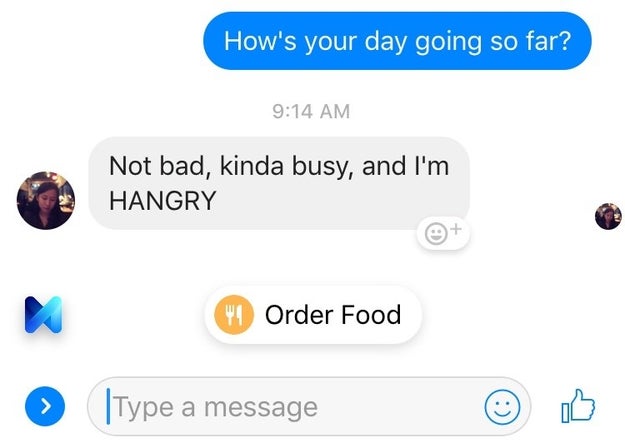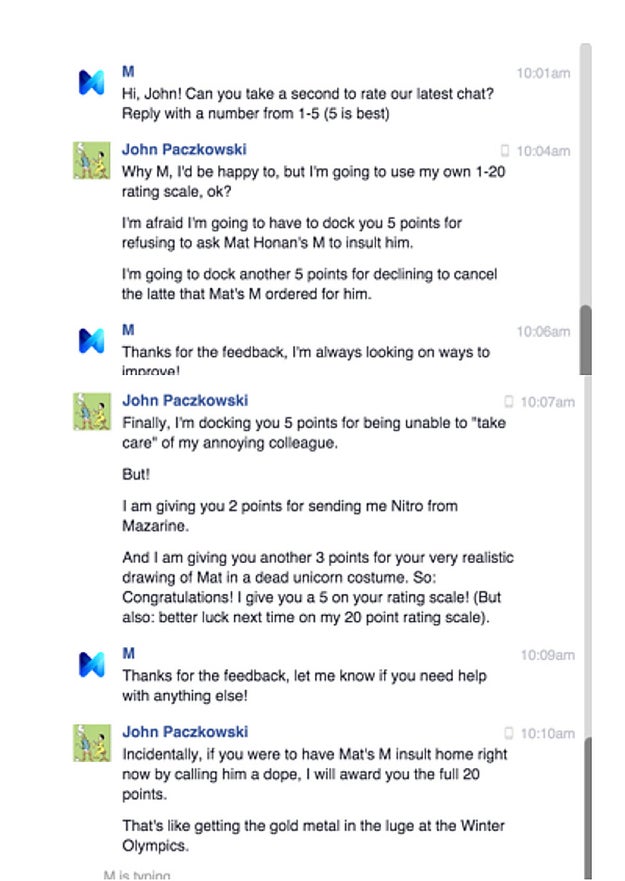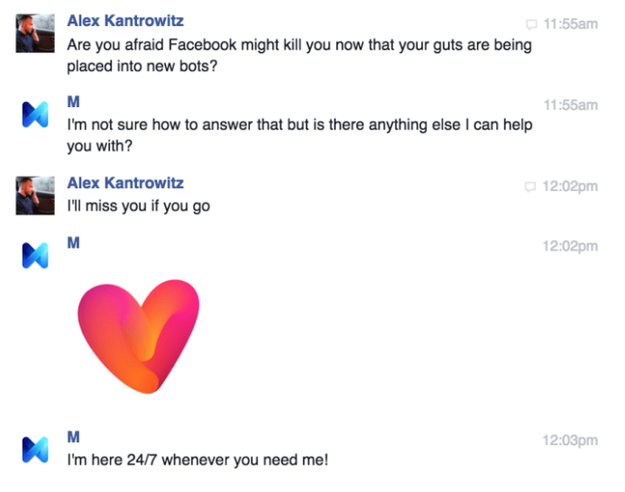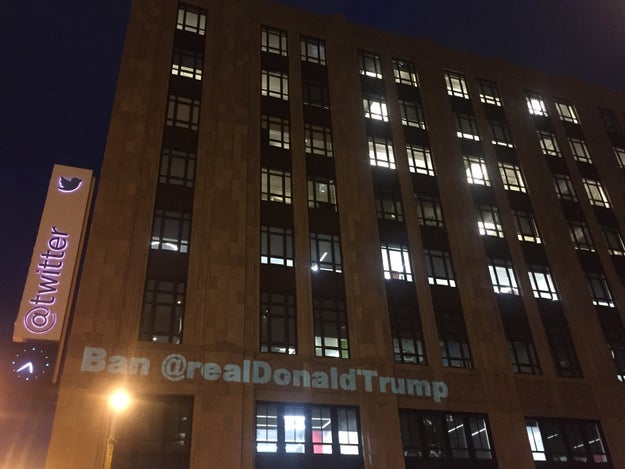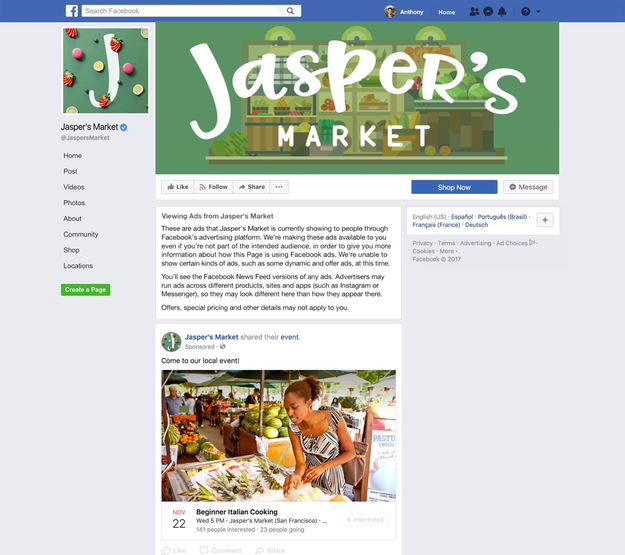Myspace — the iconic social network of the early 2000s — seemed to be experiencing a resurgence this summer when millions of visitors flocked to its new video page, potentially generating a wave of ad revenue for the site’s troubled parent company, Time Inc.
But Myspace shut the page down this week after a BuzzFeed News investigation revealed that the surge in traffic came primarily from suspect sources that racked up fraudulent ad impressions. Myspace says it was completely unaware of and didn’t profit from any fraudulent traffic or impressions, and that the video page in question was hosted and managed by a partner and not by Myspace itself.
“Myspace did not agree to, participate in or condone any ad fraud activity,” said Daniella Krieger, the VP of marketing and communications for Viant, the Time Inc. subsidiary that acquired Myspace in 2011 for $35 million.
The fraud on the Myspace video page was part of a larger scheme that also found a home on GateHouse Media, a publisher of more than 600 local newspapers in 36 states. The video pages hosted on roughly 150 of its websites also saw a surge in suspect traffic and associated fraudulent ad impressions. GateHouse told BuzzFeed News it was not aware of any fraud being committed, and like Myspace it said the video pages in question were operated by a partner.
This is the latest in an ongoing catalog of fraud in programmatic advertising that continues to shake confidence in the digital media industry. Last week a BuzzFeed News investigation revealed that ad industry insiders profited from a network of “zombie websites” that used special code to trigger an avalanche of fraudulent views of video ads. The growing awareness of ad fraud among brands and agencies is causing major advertisers to pull back budgets and demand more accountability from their partners. Industry leaders expect more than $16 billion to be stolen by fraudsters this year alone.
Prior to being shut down this week, the Myspace video page — trendingvideos.myspace.com — streamed videos licensed from reputable publishers. But for months the ad fraud investigators at Social Puncher, a consulting firm, worked with BuzzFeed News reporters to track and document significant amounts of suspicious traffic being referred to that page as well as other publishers.
Once on the page, this traffic triggered automatic redirects and page refreshes that generated massive amounts of video ad impressions without any human involvement. It’s similar to how the “zombie websites” generated ad revenue, and represents a new form of ad fraud that researchers say can rack up impressions quickly and under the radar.
Audience data from web analytics firm SimilarWeb shows that between May and the end of September, trendingvideos.myspace.com received 9.7 million visits that generated over 450 million pageviews. That video page did not exist prior to April.
Fraud detection vendor DoubleVerify also independently identified the same scheme being run on Myspace and GateHouse subdomains as part of a separate investigation, and the company shared its findings with BuzzFeed News.
Alain Begun, the vice president of marketing for GateHouse, told BuzzFeed News the company is in the process of shutting down the relevant video pages on its websites and was only made aware of the issue last week when DoubleVerify warned ad exchanges about the traffic on them.
“Fraud follows the money.”
“We take any alleged impropriety very seriously and have been engaged in discussion with our programmatic exchange partners,” he said.
The focus on video ads in this scheme reinforces how important video has become for publishers — and how it can cause them to launch questionable products in the hunt for video impressions and revenue. Thanks to higher ad rates for video and an appetite for the format among brands, many publishers have enacted a so-called pivot to video strategy to capture the audience and ad dollars available. And so have fraud operations, according Wayne Gattinella, the CEO of DoubleVerify.
“Fraud follows the money. Video CPMs [cost per thousand impressions] are much higher than display, so [fraudsters are] clearly focused on where the larger dollars go,” he told BuzzFeed News. This particular fraud operation is designed “to capitalize on this incredible demand for video,” he said.
Myspace and GateHouse both point to audience vendors, video platform partners, and external malicious actors as those accountable for any fraud taking place on the video subdomains. The partners in turn say their traffic was verified by reputable verification companies and that they too are unaware of any fraud taking place, or any system that triggers automatic redirects or similar behavior.
But Social Puncher, DoubleVerify, and a third independent ad fraud researcher separately documented the malicious automatic redirects and refreshes taking place on these websites. Social Puncher alone recorded more than 200 hours of video of ads being fraudulently displayed on the Myspace and GateHouse subdomains. This footage often shows multiple video players playing at once on a single page, redirects happening between different websites without any user action, and/or editorial content being cut off by automated page refreshes in order to display more ads. All of the aforementioned activity is fraudulent because it takes place without any human activity.
“You’ve got websites that are getting some sort of inbound traffic and then this begins a cycle of autoplaying videos with ad pages refreshing and sometimes redirecting to other pages,” Roy Rosenfeld, DoubleVerify’s VP of product management, told BuzzFeed News.
This video shows what the experience looked like on the Myspace subdomain:
View Video ›
video-player.buzzfeed.com
Social Puncher recorded ads being shown during fraudulent sessions for major brands such as Coca-Cola, Fios (Verizon), State Farm, Hershey’s, the Home Depot, Chase, and at least 14 brands belonging to Procter & Gamble, such as Tide and Always.

Social Puncher
Krieger of Myspace told BuzzFeed News the trending videos subdomain was set up and hosted by a company called ScreenRush in order to test driving paid traffic to the site. The traffic was to be sourced from a website called Swagbucks that enables people to earn reward points for engaging in activities such as watching online videos.
“We contracted to purchase a limited test of traffic specifically from Swagbucks through a company called ScreenRush,” said Krieger, adding that the video subdomain “was natively hosted by ScreenRush and integrated into the Swagbucks site.”
Myspace’s goal was to pay less to acquire traffic from Swagbucks than it would earn by showing those people video ads.
This week BuzzFeed News and Social Puncher provided Myspace with information, including data from SimilarWeb, showing that hundreds of millions of pageviews had been generated on the video site from sources other than Swagbucks.
“After reviewing all of the information you provided combined with our own internal review, we have suspended the test with Swagbucks and ScreenRush, effective immediately,” said Krieger.
Similar to Myspace, Begun told BuzzFeed News that Tout, an online video platform, operates the video subdomains attached to roughly 150 of its websites. Begun said GateHouse is in the process of ending its relationship with Tout.
“We’ve been working to wind down our relationship with Tout for close to a year based on player performance issues and a poor user experience including slow load times which affected overall page load times,” he said.
As part of the relationship with Tout, GateHouse earned revenue from the ads being shown in the Tout video player. Begun said the traffic on the Tout video pages was low, as was the resulting revenue. Both GateHouse and Myspace say they were not aware of any significant spikes in traffic on these pages.
“We aren’t privy to how traffic is driven to those pages,” Begun said. “That’s probably a question better fielded thru Tout.”
“Nobody wants to disclose or be responsible for where the money of these advertisers went.”
In statements to BuzzFeed News, Tout and ScreenRush both say the traffic coming to the video pages they manage is verified by multiple reputable traffic verification companies, and they too deny any knowledge of, or participation in, fraud.
“We work closely with our publishing partner sites, brand safety vendors and multiple 3rd party verification services to confirm that Tout inventory consists of real users and is of premium quality,” wrote Trinh Bui, Tout's vice president of client services, in an email to BuzzFeed News.
Tout said it sourced some traffic for the GateHouse websites through ScreenRush, making the latter the only source of paid traffic for both Myspace and GateHouse video pages.
The finger-pointing between publishers and partners once fraud has been uncovered is common in the industry, according to Vlad Shevtsov, the director of investigations for Social Puncher. His company has been publishing fraud investigations at SadBotTrue.com for more than a year.
“Nobody wants to disclose or be responsible for where the money of these advertisers went,” Shevtsov told BuzzFeed News.
In order to execute the scheme, the suspicious traffic flowing to the video pages on Myspace and GateHouse sites was directed to special URLs that download code, which tells a web browser how long to stay on the page, when to refresh to start new ads, or when to trigger a redirect to another site in the fraud scheme so it can show video ads. The result was that the pages generated a massive number of video ad impressions with no human interaction. That’s fraud, according to definitions from the Media Rating Council, the key industry body.
The scheme is set up so a regular user visiting the websites in question is not exposed to the automatic redirects. A visitor to trendingvideos.myspace.com, for example, was shown a normal video player that displays ads only after the editorial content is completed. This is where the real traffic from Swagbucks or other reward sites was directed, researchers say.
“No user would actually spend time looking at that. A human being will not sit through this.”
But when the special URL is accessed on these subdomains, the experience is completely different. BuzzFeed News used URLs identified by Social Puncher and DoubleVerify to trigger the redirect scheme. In one case, the browser was redirected to trendingvideos.myspace.com where a video ad began to play. Over the ensuing minutes, ads played for Gillette, Spectrum (multiple times), the University of Phoenix, and for the upcoming Thor movie from Marvel Entertainment. The page automatically refreshed to show another ad before editorial content played, in effect creating a near-constant loop of ads. At times, more than one video played at the same time, further increasing the money being stolen.
“No user would actually spend time looking at that,” said Rosenfeld of DoubleVerify. “A human being will not sit through this.”
At the core of the scheme is technology that enables it to eliminate the need for human activity or even complicated bots in order to trigger ad impressions. Once a page is loaded the sites go on autopilot and rack up ad views in a constant loop until being redirected, or until a browser crashes.
It’s the same on GateHouse sites. Social Puncher and DoubleVerify separately analyzed the traffic flowing to the video subdomains on these sites and found they are benefitting from the same fraudulent traffic as Myspace. These video pages are in some cases responsible for the vast majority of traffic going to the entire site, though GateHouse says it does not factor this traffic into its audience reporting. (Myspace also said it did not install analytics tracking on its video subdomain due to the fact that it was controlled by ScreenRush.)
Still, the traffic is being measured by external analytics services. For example, the videos.salina.com page for the Salina Journal in Kansas is currently responsible for 92% of its total traffic, according to data from SimilarWeb.
Alexa, another web analytics service, shows a similar percentage. The chart showing the site’s Alexa traffic rank also illustrates how a recent surge in traffic to the video page led the Salina Journal to become one of the top 5,000 most-visited sites in the US:

Alexa
To put that into perspective, Salina has a population of just under 50,000 people, according to US Census data.
In the case of Myspace’s trending videos page, the influx of new traffic helped the site temporarily reverse an ongoing decline in its traffic rank:
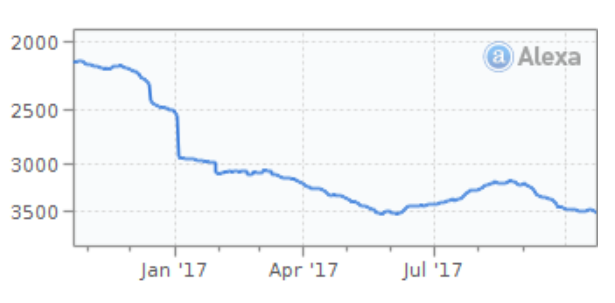
Alexa
Notably, the vast majority of this new traffic to Myspace came from desktop users, which had previously made up a minority of Myspace’s visits. These new visitors also watched a huge number of videos and, by extension, ads on the videos page.
SimilarWeb found that from its launch to the end of September the average visitor to trendingvideos.myspace.com spent over 23 minutes and viewed more than 58 pages. To put that into perspective, SimilarWeb’s data for YouTube shows the average user spends 20 minutes and views an average of just under 10 pages. This means the Myspace video page run by ScreenRush almost instantly became more addictive than YouTube in terms of average time spent, and caused people to view more than five times the average number of pages.
Along with the high session time and number of pages viewed, SimilarWeb found that these new desktop visitors were referred from the same group of websites, and accounted for close to 100% of Myspace's referral traffic from May to September.
These sites had not previously referred significant traffic to Myspace. As a result, they provided the path that ad fraud researchers and BuzzFeed News followed to identify where the traffic is coming from. This helped determine whether it was the result of humans engaging with Myspace and other sites, or fraudulent traffic according to industry standards.
Prior to May, Myspace’s biggest sources of referral traffic were Wikipeda and PeekYou, an online people-search tool. “They were responsible for an average of 27% of the site's referral traffic between September and April,” according to a SimilarWeb report for BuzzFeed News. (Roughly half of Myspace’s total traffic comes from search, and another close to 30% of visitors go directly to Myspace.)
But in June and July, Wikipedia and PeekYou only accounted for a tiny percentage of all referral traffic because this new network of referral sites suddenly began throwing millions of desktop visitors and pageviews at the Myspace video page. (The company told BuzzFeed News its internal traffic logs and comScore reports did not reflect this increase in referral traffic. As noted, the video page was operated by ScreenRush and did not have Myspace analytics tracking installed.)

BuzzFeed News / SimilarWeb
The biggest group of these new referrers is more than 20 online arcade websites that were registered on similar dates and are clones of one another. They offer the same games and largely use the same website template, albeit with different colors. The source code of each site also includes the same boilerplate text in the description, “Welcome to SiteGenerator.” This shows they were all created using the same product.

Social Puncher
Traffic rank data from Alexa also shows that many of the arcade sites share identical patterns, suggesting they are receiving the exact same visitors at the exact same times, which researchers say is a telltale sign of fraudulent traffic. (Identical Alexa traffic rank patterns were also present in the sites exposed by BuzzFeed News last week.)

Social Puncher
Quelle: <a href="Myspace Looked Like It Was Back. Actually, It Was A Pawn In An Ad Fraud Scheme.“>BuzzFeed
